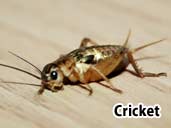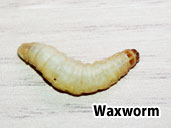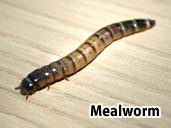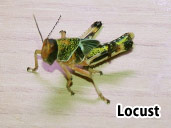Green Anole Care Sheet written by Paul Flexman for TheReptilian.co.ukCommon name: Green Anole, but also known as the American chameleon due to its ability to change colour. It is not related to the chameleon at all. Scientific name: Anolis carolinensis DescriptionDescription: A small arboreal lizard native to the United States. Green Anoles are very active lizards but not generally handlable due to their nervous temperament. The Green Anole is definitely a display species which is highly entertaining to watch, especially if a number are kept together as a colony. Size: Green Anoles can reach up to 23cm (9 inches) snout to vent in length, but this size is seldom reached in captivity. Life span: Up to 10 years, but average life expectancy in captivity is 3 to 5 years. Origin: South Eastern states of the USA. Habitat: In the wild Green Anoles can be found in bushes, shrubs, trees (not above 15’) and rock/brick walls. Temperament: As stated above, they are generally nervous animals that do not appreciate being handled. Very much a display animal. Your Green Anole vivarium should contain:SubstratesMy own personal preference is sterile topsoil with potted houseplants stood on top but live plants can be directly planted in the substrate as long as it is chemical/pesticide free. By leaving the plants in their pots it is possible to rotate a range of plants and prevent any herbivorous feeder insects causing too much damage. WaterAll Lizards, including Green Anoles need fresh water daily. Most Anoles will only take water from their surroundings, so it is important to mist the tank regulary with water from a spray bottle, but a water bowl can also be placed within the vivarium, which is changed frequently to avoid the build up of bacteria. Humidity Having an hygrometer within the enclosure will allow you to monitor the humidity more accurately. Both digital and dial hygrometers are readily available online and from reptile specialist shops.
HeatGreen Anoles appreciate temperatures around 24-27°C (75 to 80°F) with a basking lamp spot of 29-32°C (85 to 90°F) during the day. Temps can be allowed to drop as low as 18°C (65°F) at night. I have installed a thermostatically controlled heat mat on the wall of the vivarium as a precaution to give the Anoles a place to sleep that will not drop below that temperature. LightingA 40 watt focused spot bulb in a reflector mounted above the mesh top of the vivarium will provide an ideal basking spot if a suitable perch is placed inside the vivarium underneath the mesh lid. A 5% UV light is also required to mimic the natural lighting that anoles would be exposed to in the wild. The UV lamp will help with preventing the onset of metabolic bone disease (MBD). General CareFeeding
Green Anoles will readily take a variety of insects including mini mealworms, L2 locust hoppers, small crickets, waxworks (as an occasional treat), etc. Try to avoid feeding anything that is larger than half the size of the anole’s head. Gut loading the feeder insects is advisable as is will increase their nutritional value. It is also worthwhile dusting the feeder insects with Nutribol twice a week. HandlingWith the odd exception you can pretty much forget handling your Green Anole as it causes major stress for them. SexingThe male green anole is considerably larger than the female and the male’s head has an almost crocodilian appearance. Any more Questions?This care sheet is a simple step-by-step guide to successful Green Anole keeping, but if you have anymore questions or need more specific information about the care of Green Anoles, please enter our forum. It is a useful resource where you can ask other members to share good practice and also talk about your experiences of being a Green Anole keeper.
|
|

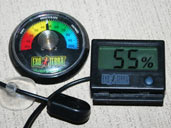 Between 60 and 70% is ideal but as low as 50% can be tolerated. Keeping the humidity above 60% will have the benefit of aiding shedding. Misting the tank regularly with water in a spray bottle should keep the humidity around the correct levels.
Between 60 and 70% is ideal but as low as 50% can be tolerated. Keeping the humidity above 60% will have the benefit of aiding shedding. Misting the tank regularly with water in a spray bottle should keep the humidity around the correct levels.